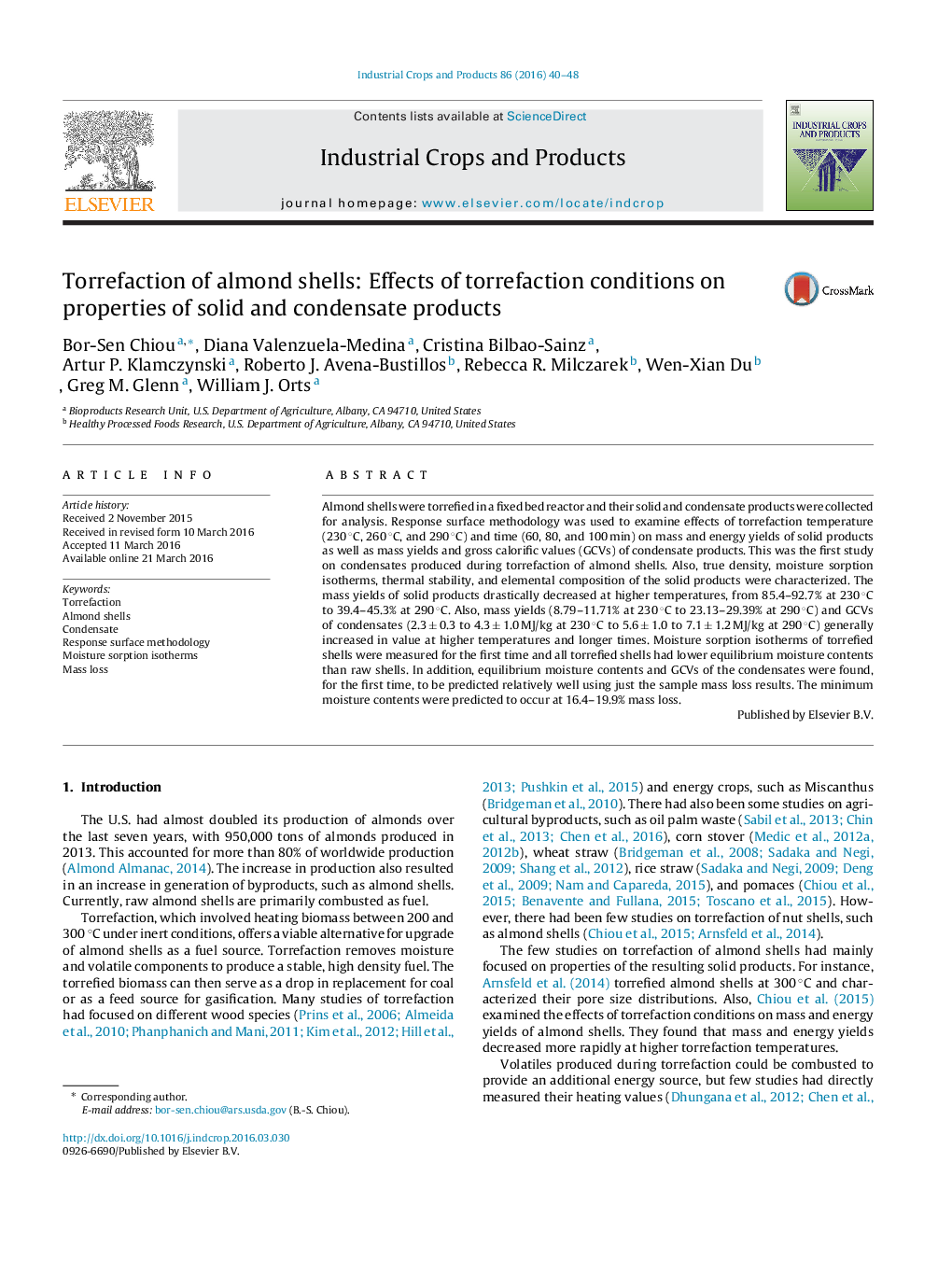| کد مقاله | کد نشریه | سال انتشار | مقاله انگلیسی | نسخه تمام متن |
|---|---|---|---|---|
| 4512540 | 1624824 | 2016 | 9 صفحه PDF | دانلود رایگان |
• Gross calorific value of torrefied shells increased up to 28 MJ/kg.
• Condensate yields and gross calorific values increased with torrefaction severity.
• Proportion of energy from condensate increased rapidly at 290 °C.
• Equilibrium moisture contents could be predicted from mass loss.
• Minimum moisture content predicted to occur at 16.4–19.9% mass loss.
Almond shells were torrefied in a fixed bed reactor and their solid and condensate products were collected for analysis. Response surface methodology was used to examine effects of torrefaction temperature (230 °C, 260 °C, and 290 °C) and time (60, 80, and 100 min) on mass and energy yields of solid products as well as mass yields and gross calorific values (GCVs) of condensate products. This was the first study on condensates produced during torrefaction of almond shells. Also, true density, moisture sorption isotherms, thermal stability, and elemental composition of the solid products were characterized. The mass yields of solid products drastically decreased at higher temperatures, from 85.4–92.7% at 230 °C to 39.4–45.3% at 290 °C. Also, mass yields (8.79–11.71% at 230 °C to 23.13–29.39% at 290 °C) and GCVs of condensates (2.3 ± 0.3 to 4.3 ± 1.0 MJ/kg at 230 °C to 5.6 ± 1.0 to 7.1 ± 1.2 MJ/kg at 290 °C) generally increased in value at higher temperatures and longer times. Moisture sorption isotherms of torrefied shells were measured for the first time and all torrefied shells had lower equilibrium moisture contents than raw shells. In addition, equilibrium moisture contents and GCVs of the condensates were found, for the first time, to be predicted relatively well using just the sample mass loss results. The minimum moisture contents were predicted to occur at 16.4–19.9% mass loss.
Journal: Industrial Crops and Products - Volume 86, August 2016, Pages 40–48
